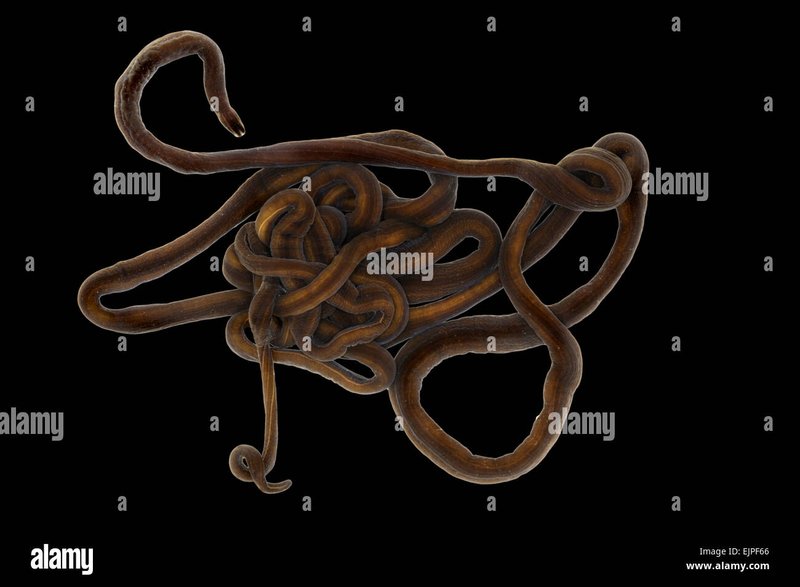
So, what makes the bootlace worm’s nervous system so special? Let’s dive deep into this topic, and I’ll try to break it down in a way that’s easy to understand. It’s like peeling back the layers of an onion—each layer reveals something new and intriguing about these remarkable worms.
What Are Bootlace Worms?
Bootlace worms, known scientifically as *Lineus longissimus*, are one of the longest species of worms in the world. They can grow up to 55 meters long—yes, you read that right! Imagine a worm that could stretch the length of a football field! They typically inhabit shallow waters along the coasts of Europe and are often found in muddy environments.
These worms have a soft-bodied structure and can range in color from a bright yellow to a striking blue. Their long, slender form is quite captivating, but it’s their nervous system that truly sets them apart from other worms. So, why should we care about how their nervous system works? Understanding it gives us a glimpse into how these creatures navigate their world and survive in their often harsh environments.
The Basic Structure of the Nervous System
To grasp how bootlace worms function, let’s first look at the basics of their nervous system. Unlike humans, who have a centralized nervous system with a brain and spinal cord, bootlace worms have a more decentralized setup. Their nervous system consists of a network of nerve cords and ganglia, which are clusters of nerve cells.
Here’s how it works in simpler terms: imagine a web where each point is a ganglion, sending and receiving signals. This design helps the worm control its movements and respond to stimuli effectively. It’s like having multiple small brains spread throughout their body instead of just one. That allows them to quickly react to predators or obstacles in their environment.
How Does the Nervous System Help Bootlace Worms Survive?
You might be wondering why such a unique nervous system is crucial for bootlace worms. Well, their habitat is full of dangers. These worms often live in environments with predators and changing conditions. With their decentralized nervous system, they can react quickly and efficiently.
For instance, if a predator comes near, the bootlace worm can squirm away in the blink of an eye. This quick response is vital for survival. If they relied solely on a centralized nervous system, they might not react fast enough to evade danger. Instead, their nerve cords allow them to sense changes around them and respond immediately.
Movement and Coordination
Movement for bootlace worms is an elegant dance powered by their nervous system. They rely on muscles in their body to help them move through the water. The nervous system plays a key role here, coordinating muscle contractions to create movement.
Picture a conductor leading an orchestra; the nervous system signals various parts of the worm’s body to work together harmoniously. This allows bootlace worms to burrow into the sea floor or glide through the water, which is essential for finding food and escaping predators.
Regeneration and the Nervous System
One of the most fascinating aspects of bootlace worms is their ability to regenerate. If a part of their body gets damaged, they can regrow it! The nervous system plays a part in this incredible ability.
When a bootlace worm is injured, the nerve cords help send messages to the surrounding tissues, signaling them to begin the healing process. It’s like having a built-in repair crew that jumps into action when something goes wrong. This regeneration ability not only helps them survive but also ensures they can thrive in their environment.
Research and What We Can Learn
Scientists study the nervous systems of bootlace worms to understand more about regeneration and nerve function. By seeing how these worms work, researchers can gain insights into nerve damage and healing in other species, including humans.
Here’s the thing: understanding the nervous system of bootlace worms could unlock secrets about repairing damaged nerves in our bodies. It’s like finding a hidden treasure that could lead to potential breakthroughs in medicine. The more we learn about these creatures, the better we can understand the complexities of life and healing.
The bootlace worm’s nervous system is a remarkable example of nature’s ingenuity. With their decentralized nerve network and abilities like regeneration, they adapt and survive in ways that inspire curiosity and admiration. By exploring how these worms function, we gain valuable insights that extend beyond their watery homes. So, the next time you hear about bootlace worms, remember that underneath their slimy exterior lies a fascinating world of biology waiting to be discovered.

